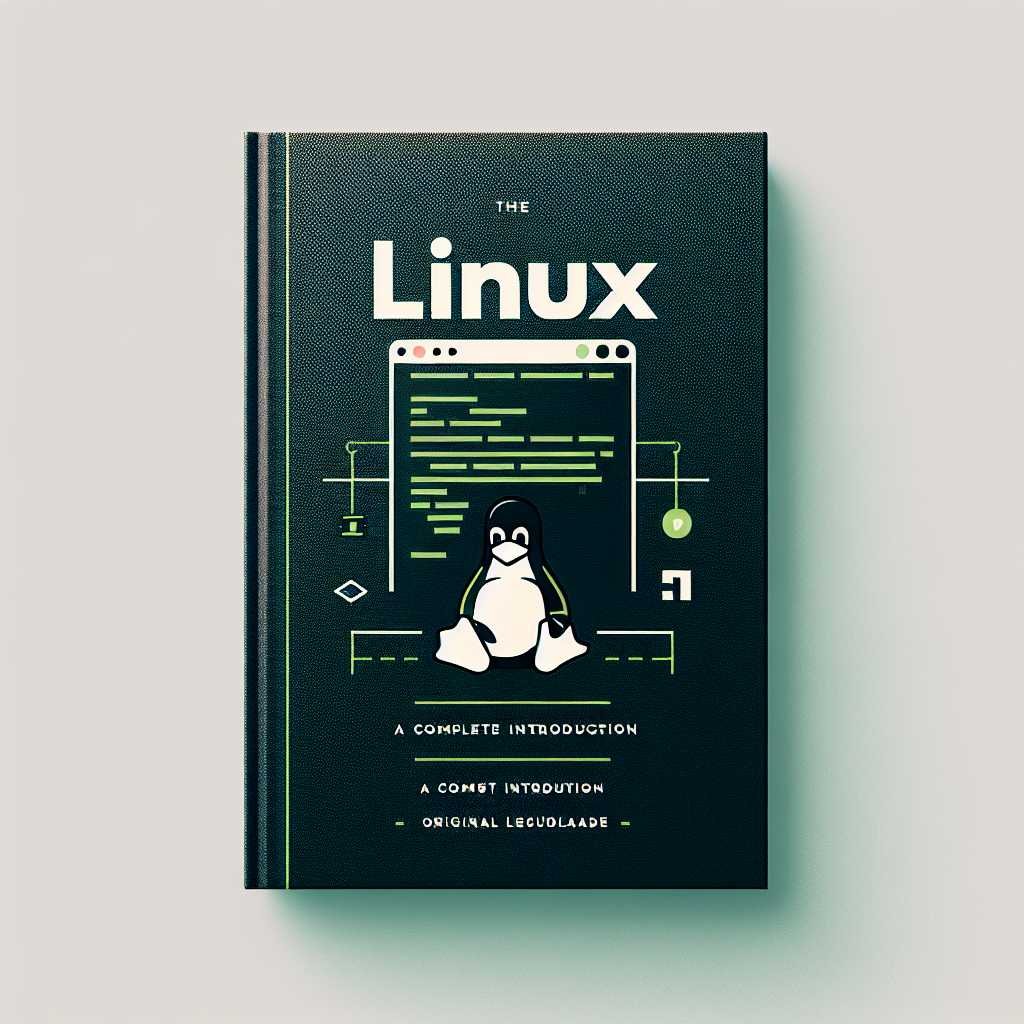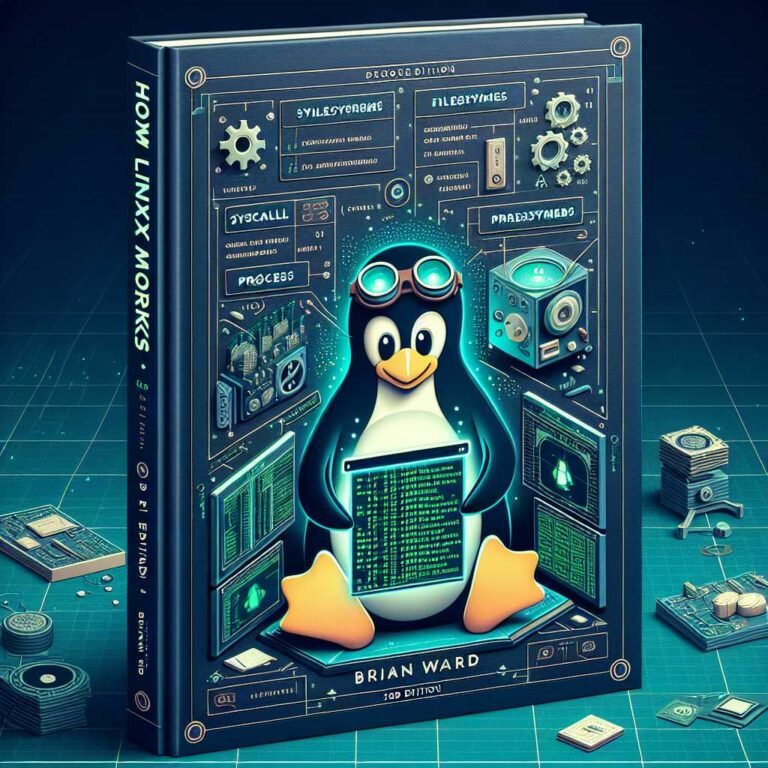The Linux Command Line, 2nd Edition: The Friendly, Full-Stack Guide to Mastering Bash in 2025
You’ve clicked, dragged, and scrolled your way around Linux—but the moment you open a terminal, it can feel like stepping onto the bridge of a spaceship. What do all those commands do? Why does everyone swear by the command line? And how do you actually get from ls to writing scripts that save you hours every week?
That’s the gap The Linux Command Line, 2nd Edition by William Shotts aims to close. It doesn’t just hand you commands—it teaches a mindset, a workflow, and the Unix philosophy that powers modern computing. If you’ve ever wanted to feel at home in the terminal, automate grunt work, or understand how your system really operates, this book offers a clear, hands-on path.
Why the Linux Command Line Still Matters
Spend a week on the CLI and you start to see it: consistency, speed, and control. The command line is where:
- Repetitive tasks get automated.
- Systems are configured and diagnosed.
- Servers are managed at scale.
- Text and data are processed in seconds instead of minutes.
Even if you’re a GUI-first user, knowing Bash pays off. You can chain commands with pipes, find and replace across thousands of files, and build small tools that stick around. And because Linux carries the Unix tradition, those skills transfer easily to macOS and many server environments.
Here’s why that matters: you won’t just learn “how” to run commands—you’ll learn “why” they work together, and that makes everything easier to remember and apply.
What This Book Actually Teaches (and Why It Works)
The Linux Command Line, 2nd Edition starts at the very beginning—opening a terminal—and gently raises the difficulty as you gain confidence. Each chapter is short, digestible, and immediately actionable. The pacing is forgiving for beginners yet substantial enough for intermediate users who want to fill in gaps.
What you’ll cover from end to end: – Navigating the filesystem with cd, ls, pwd, and friends. – Managing files and directories, including permissions and ownership. – Understanding processes and jobs; using ps, top, and kill effectively. – Working with standard input/output, redirection, and pipelines. – Editing files with Vi (and by extension, Vim), the staple editor on Unix-like systems. – Pattern matching and regular expressions for search and transformation. – Scripting in Bash—variables, conditionals, loops, functions, and debugging. – Practical tools for text processing like grep, sed, cut, sort, uniq, paste, and patch. – System administration basics—package installation, networking, and service management.
The book’s superpower is clarity. It explains not only the “switches and flags” but also how commands fit into an ecosystem, so you can combine them to solve real problems. Ready to go deeper with a trusted guide—Buy on Amazon.
For context and deeper dives, you can cross-reference topics with the GNU Coreutils and man pages as you go. Shotts encourages that habit—learning to navigate documentation is part of becoming fluent.
Who This Book Is For (Beginners, Tinkerers, and Busy Pros)
Short answer: anyone who wants to think like a power user. If you’re switching from Windows or macOS to Linux, this is your starter kit. If you’ve used Linux for a while but feel shaky on Bash or regex, this fills in the missing pieces. And if you manage servers or build software, the book’s approach to pipelines and scripting will likely sharpen your workflow.
It’s also course-friendly. The chapters map well to a semester schedule or a 30-day personal bootcamp, and the exercises don’t require fancy hardware—just a terminal and curiosity. Prefer a physical copy to mark up as you learn—Check it on Amazon.
The Philosophy Behind the Tools
One of the most valuable threads running through the book is the Unix philosophy: do one thing well, and compose small tools into powerful chains. That idea, plus text-as-interface, means your commands become building blocks.
- Pipes let you send the output of one command into another.
- Filters like grep and sed transform streams of text.
- Simple scripts glue commands together into repeatable jobs.
Once those patterns click, everything you do in the terminal gets faster—and you’ll see new possibilities everywhere.
If you want a canonical reference while studying, bookmark the GNU Bash manual.
Core Skills You’ll Practice (With Real-World Payoff)
Here are the skills that consistently deliver results once you internalize them:
- Navigation and file management
- Find your bearings quickly with cd and pwd.
- See what matters using ls -lah and tree (if installed).
- Manage permissions (chmod, chown) without fear.
- Redirection and pipelines
- Combine commands like lego bricks: cat access.log | grep 404 | wc -l.
- Save clean output to files with > and >>.
- Understand stderr vs stdout and redirect them wisely.
- Pattern matching and text processing
- Extract meaningful lines with grep -E and regular expressions.
- Reshape data using cut, sort, uniq, tr, and paste.
- Make surgical edits with sed and patch.
- Processes and jobs
- Monitor resource usage with top or htop.
- Manage foreground/background tasks and signals.
- Editing with Vi/Vim
- Move efficiently without a mouse.
- Edit configs safely and quickly.
- For extensions and plugins, explore Vim.
- Bash scripting
- Write scripts with arguments, conditionals, loops, and functions.
- Make your scripts safe and portable.
- Lint your scripts with tools like ShellCheck.
As you work through the book, try to rewrite small manual tasks as scripts. That habit turns learning into time saved. For practical troubleshooting or distro nuances, the Arch Wiki and Ubuntu documentation are superb complements.
Bash Scripting: From “It Works” to “I Trust It”
Scripting is where many learners stall. Shotts sidesteps that by starting small and building to reusable tools. You’ll learn the scaffolding first—shebang lines, permissions, variables—then move into conditional logic, loops, functions, and positional parameters.
Key takeaways that prevent headaches: – Always set permissions correctly (chmod +x yourscript.sh). – Make scripts predictable with set -euo pipefail when appropriate. – Quote your variables to avoid word-splitting nightmares. – Log output for debugging and future you.
Think of scripts like little employees: give them clear instructions, test them on a sample, then let them run. You’ll soon have a personal library that handles backups, cleanups, and monitoring with zero clicks.
A 30-Day Plan to Finish the Book (And Actually Retain It)
Here’s a pragmatic sprint plan that pairs well with the book’s chapter structure:
- Days 1–5: Terminal basics
- Open the terminal daily and practice navigation.
- Explore your home directory and dotfiles.
- Learn a few quality-of-life features like tab completion and history search (Ctrl+r).
- Days 6–10: Redirection and pipelines
- Solve small data tasks using pipes.
- Write one-liners that filter and summarize text.
- Days 11–15: Vi basics and file editing
- Learn motion keys, insert modes, search, and save/quit flows.
- Practice editing configuration files.
- Days 16–20: Processes, permissions, environment
- Create and manage users (on a test system or VM).
- Use ps, top, jobs, and kill confidently.
- Explore PATH and your shell profile.
- Days 21–25: Bash scripting fundamentals
- Write a script that backs up and compresses a directory.
- Add command-line options and checks.
- Lint with ShellCheck and iterate.
- Days 26–30: Text mastery and mini projects
- Build a pipeline to analyze server logs.
- Automate a tedious weekly task at work or home.
- Document what you built and share it with a teammate.
Hold yourself to one small project per week; that momentum is where confidence comes from. If you’re choosing a study companion for your Linux journey, this one’s a safe bet—View on Amazon.
Formats, Editions, and Buying Tips
The 2nd Edition remains the go-to recommendation because it balances breadth and depth without drowning you in trivia. When picking a format, consider:
- Paperback vs. Kindle: Kindle is searchable and easy to carry; paperback is great for annotation and quick flip-through.
- Reading workflows: Pair Kindle with your terminal on one screen; or keep a paperback on your desk while you practice.
- Staying current: Core CLI concepts don’t change quickly; you can supplement with online docs for any distro-specific updates.
For hands-on study, I like paperback for long sessions and Kindle for quick refreshers when I’m away from the desk. Want the Kindle or paperback version and current deals—See price on Amazon.
If you’d like to check command behavior across environments, the POSIX spec and your distro’s package docs are always reliable companions.
Common Pitfalls This Book Helps You Avoid
- Treating the terminal like a black box
- Solution: The book explains how commands work under the hood, not just what to type.
- Memorizing without practice
- Solution: Each chapter encourages you to try and tinker, which locks in learning.
- Breaking things accidentally
- Solution: You’ll learn to validate commands, use dry runs where possible, and manage permissions safely.
- Fear of regex and sed
- Solution: Step-by-step examples demystify both, so you can search and transform text confidently.
- Script “spaghetti”
- Solution: The author’s structure-first approach gives you patterns that scale.
Let me be candid: you will make mistakes as you learn. That’s normal. What matters is that you gain the instincts to spot and fix them quickly—and this book cultivates exactly that.
Real-World Workflows You Can Adopt Immediately
Try these simple wins as you read:
- Log cruncher: Parse a week of web server logs to find top 404s and slow endpoints.
- Daily backup: Cron a script to compress and sync your dotfiles to a secure location.
- Quick search: Use grep -R “keyword” ~/Projects to find references across codebases.
- System health: Watch system load and memory with top while spinning up containers.
- Text surgery: Batch-rename files or rewrite config snippets with sed.
Document your best one-liners and scripts in a personal wiki or README; it builds a library you’ll reuse for years.
Ready to make these workflows second nature—Buy on Amazon.
Alternatives and Perfect Complements
- Manual pages and references
- The man pages are the canonical source for flags and behavior.
- The GNU Bash manual is invaluable for shell features and quirks.
- Online tutorials and wikis
- The Arch Wiki is famously thorough—even if you don’t use Arch.
- Legacy but useful: The Linux Documentation Project.
- Editor mastery
- If Vi sparks your interest, dive deeper into Vim for modern editing power.
Think of Shotts’ book as the map; these sources are the detailed atlases. To support our work and grab the book in one click—Shop on Amazon.
Final Takeaway
If you’re serious about leveling up on Linux, The Linux Command Line, 2nd Edition is a rare book that meets you where you are and turns terminal fear into fluency. You’ll learn timeless skills—navigation, piping, text processing, and scripting—that make you faster, safer, and more creative on any Unix-like system. Start small, practice daily, and apply every chapter to one tiny real-world task. That’s how the command line goes from intimidating to empowering. Want more deep dives like this? Stick around and explore our latest guides and walkthroughs.
FAQ: The Linux Command Line, 2nd Edition
Q: Is The Linux Command Line good for absolute beginners? A: Yes. It assumes no prior terminal experience and builds up from basics, with short chapters and examples that you can run immediately.
Q: Is it still relevant in 2025? A: Definitely. The core tools—Bash, grep, sed, pipes, redirection—are foundational and change slowly. For distro-specific updates or modern tooling, supplement with the Arch Wiki or your distro’s docs.
Q: How long does it take to finish? A: Many readers complete it in 3–6 weeks with daily practice. A steady 30–60 minutes per day works well, especially if you pair chapters with small projects.
Q: Do I need to use a specific Linux distribution? A: No. The book focuses on universal commands and concepts. Examples run on popular distros like Ubuntu, Fedora, Debian, and Arch, and most also work on macOS with the Terminal app and Homebrew-installed utilities.
Q: Does the book teach Vim or just Vi? A: It focuses on Vi fundamentals that transfer directly to Vim. For modern features and extended workflows, explore Vim’s documentation and plugins after you’re comfortable with the basics.
Q: What about Zsh or Fish—will this still help me? A: Yes. Bash is the baseline shell in many environments, and learning it gives you portable skills. Concepts like pipelines, redirection, and scripting patterns apply across shells. If you switch to Zsh later, you’ll transition smoothly.
Q: Do I need programming experience to write Bash scripts? A: Not at all. The book starts with shell basics and introduces scripting incrementally. You’ll write useful scripts even if you’ve never programmed before.
Q: Is there a big difference between Kindle and paperback for learning? A: It’s personal preference. Kindle is searchable and great for quick lookups; paperback makes it easy to annotate and flip through. Some learners use both: paperback at the desk, Kindle on the go.
Q: What if I get stuck on regex or sed? A: That’s common. Re-read the examples, practice on small sample files, and check syntaxes with the man pages or reputable guides. Over time, patterns like anchors (^$), character classes, and capture groups will feel natural.
Q: How can I safely practice without breaking my system? A: Work in your home directory or in a playground folder inside a test virtual machine. Use cat and less to inspect files before running commands that modify them, and apply dry-run flags where available.
Discover more at InnoVirtuoso.com
I would love some feedback on my writing so if you have any, please don’t hesitate to leave a comment around here or in any platforms that is convenient for you.
For more on tech and other topics, explore InnoVirtuoso.com anytime. Subscribe to my newsletter and join our growing community—we’ll create something magical together. I promise, it’ll never be boring!
Stay updated with the latest news—subscribe to our newsletter today!
Thank you all—wishing you an amazing day ahead!
Read more related Articles at InnoVirtuoso
- How to Completely Turn Off Google AI on Your Android Phone
- The Best AI Jokes of the Month: February Edition
- Introducing SpoofDPI: Bypassing Deep Packet Inspection
- Getting Started with shadps4: Your Guide to the PlayStation 4 Emulator
- Sophos Pricing in 2025: A Guide to Intercept X Endpoint Protection
- The Essential Requirements for Augmented Reality: A Comprehensive Guide
- Harvard: A Legacy of Achievements and a Path Towards the Future
- Unlocking the Secrets of Prompt Engineering: 5 Must-Read Books That Will Revolutionize You



